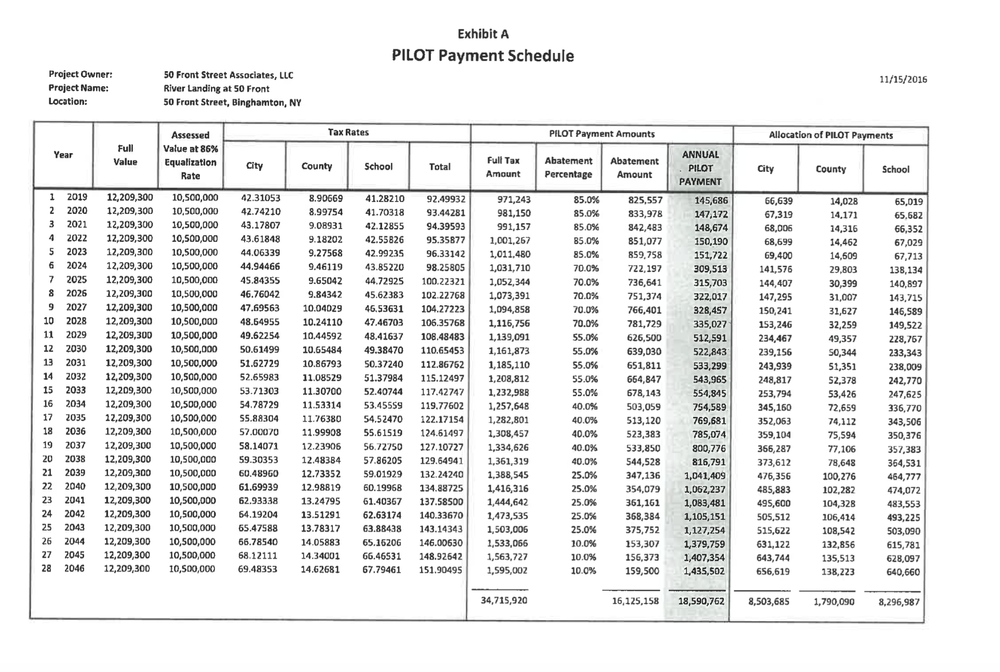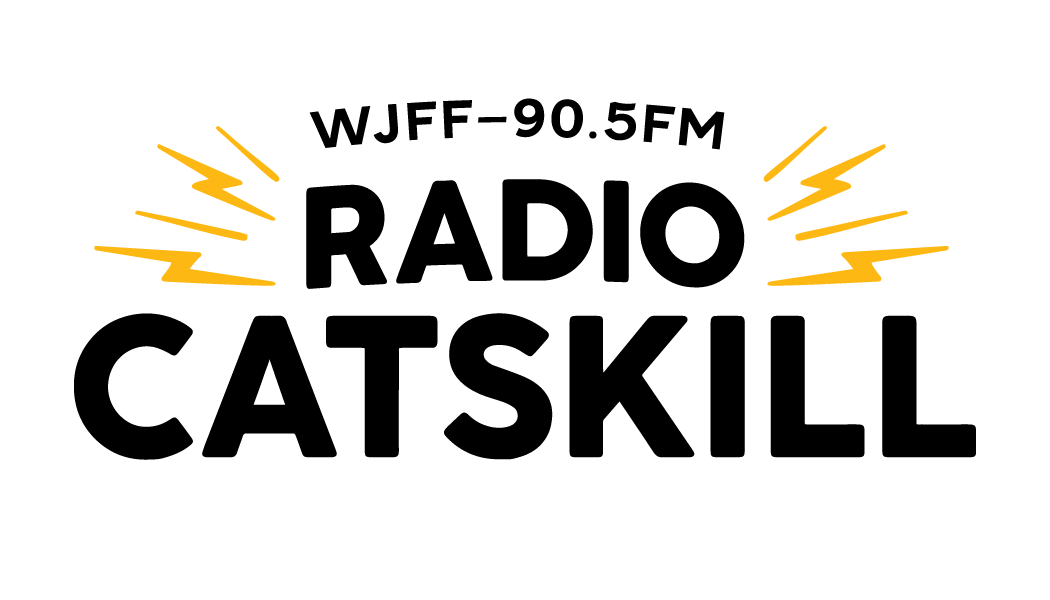This story originally appeared in New York Focus, a nonprofit news publication investigating power in New York. Sign up for their newsletter here.
NEW YORK STATE · March 6, 2024
These Local Agencies Hand Out Over a Billion in Tax Breaks Across New York
What are industrial development agencies?
By Arabella Saunders and Julia Rock , New York Focus

If you’ve ever stayed in a hotel, visited an aquarium, ordered something on Amazon, or paid your utility bill in New York, your life may have been impacted by a little-known local authority called an industrial development agency. Under state law, IDAs have the power to dole out tax breaks to corporations in order to promote the “economic welfare” of their communities — and as a result, they play a huge role in shaping the tax bases of towns, counties, and school districts.
The agencies comprise a sizable chunk of New York’s economic development apparatus. The state hands out nearly $11 billion in subsidies annually to lure corporations, with mixed results, little oversight, and plenty of scandal.
New York Focus has been covering IDAs, their impacts on crucial areas of state policy, and the controversies surrounding them. For example, our reporting has uncovered the important role that IDAs play in climate politics, though their involvement in energy projects had previously drawn little scrutiny. Last fall, we reported on wind and solar developers’ claims that IDA tax breaks make their projects financially viable, even as state watchdogs question whether they should be eligible for the subsidies. And last month, a New York Focus investigation found that IDAs handed out over $1 billion in tax breaks to fossil fuel projects between 2010 and 2022.
We have also dug into their involvement in housing policy. Last year, we reported on IDAs giving tax breaks to market-rate housing developers, even though experts and watchdogs argue that under state law, IDAs are not permitted to subsidize housing — a tension that came to a head in Ulster County. And we reported on a growing local faction on Long Island’s East End demanding the dissolution of its IDA.
In response to reader questions, we’re stepping back to take a broad look at these agencies, how they work, and efforts to reform them.
Do you have tips or questions about your local IDA? Fill out the form above or email Arabella Saunders at arabella@nysfocus.com and Julia Rock at julia@nysfocus.com.
What is an IDA?
Industrial development agencies are local authorities that give out property, sales, and mortgage tax breaks to businesses and developers that would bring jobs to an area — and in turn, boost its economy. The agencies were created under state law in 1969 to draw large-scale industrial and manufacturing operations to New York.
Under that law, IDAs are permitted to subsidize a range of projects, including manufacturing and warehousing, renewable energy, educational and cultural institutions, horse and car racing facilities, retirement homes, and more.
Each IDA has a board, composed of three to seven unpaid members who can be “representatives of local government, school boards, organized labor and business,” according to state law. Members are appointed by a county legislator, and they vote on whether to approve applications from businesses seeking tax breaks.
How many IDAs are in New York?
There are 107 IDAs in New York: 56 at the county level and 51 others for cities, towns, and villages — including one for New York City. IDA jurisdictions can overlap. For example, Rensselaer County and the city of Rensselaer each have an IDA. It’s up to a business to decide to which IDA they want to ask for tax breaks. New IDAs can still be created today, but to form one, a locality needs approval from its county legislature and the New York state legislature.
In 2021, IDAs had 4,324 active projects across the state, totaling $1.1 billion in net tax exemptions. The bulk of active projects — 61 percent — were overseen by county IDAs, while 7.4 percent were in New York City, according to data from the state comptroller.
How do IDA tax breaks work?
IDAs grant tax breaks through a mechanism called a payment-in-lieu-of-taxes agreement, commonly referred to as a PILOT. An entity seeking a tax break will contact an agency, and might have some informal conversations with the executive director. But to enter a into PILOT, a developer must submit a formal application to the IDA detailing the project’s purpose and the type of tax break it is seeking.
A 2015 reform law standardized that application, which must include questions about the estimated value of the requested tax break, as well as the quantity and nature of the jobs that the project would create. Under the law, applicants must also answer a version of the question, “If not for the tax breaks, would the project still move forward?” They submit the application under penalty of perjury.
When an IDA approves an application, the agency and the business enter into a PILOT agreement, in which the business essentially receives a discount on its taxes. Per the PILOT payment plan, a company pays just a portion of its annual taxes, and typically, that portion increases yearly until the company starts to pay full taxes. IDAs use the lower tax bill to incentivize businesses to come to their towns or counties.
How do IDAs decide when to grant a tax break?
In theory, IDAs have a standard process for considering projects. The state sets certain rules and guidelines for how IDAs should consider applications, but every IDA also has its own policies and procedures.
The original state law that created IDAs requires projects they approve to promote “economic welfare” and create jobs for their communities, and the 2015 reform law added another requirement: A company must attest that it could not develop the project for which it’s seeking a tax break without the discount.
IDAs are supposed to reject projects that do not meet these three requirements. But they can use their discretion for projects that do, and each one has its own approach. Every IDA is required to publish a so-called uniform tax exemption policy, which stipulates the types of projects it can approve and the guidelines it should use to make decisions. Sometimes, the county legislature shapes that policy by formally directing the IDA not to grant tax breaks to certain industries, as has happened in recent years with housing, wind, and solar.
In addition to its own board meetings, an IDA is required to hold public hearings on a tax break application. (Both of those gatherings, as of 2020, must be live-streamed.) After the public hearing and internal deliberation, the IDA board votes.
Last year, a state investigation led by Senator James Skoufis found that IDAs generally weren’t conducting “a meaningful or diligent analysis of the claims” made by companies in these project applications.
How do PILOT agreements work?
The length of a PILOT varies by the project — we often see agreements ranging from 10 to 30 years. Generally, they’re structured so that the amount a company pays in taxes gradually increases each year for the duration of the project. But for infrastructure projects like wind or solar farms, the value of which depreciate over time, the PILOT agreements are often set at a fixed annual payment.
Below is an example of a PILOT payment schedule from the Broome County Industrial Development Agency.

When an agreement ends, a company can seek to renew a project’s PILOT, but it must undergo the application and public hearing process again. IDAs can approve renewals for reasons like renovation or expansion costs, as was the case for the Long Island Aquarium in Riverhead. The aquarium developers asked for a PILOT renewal twice, and now won’t pay full property taxes until 2031 — 20 years after the project was supposed to stand on its own feet.
What kinds of projects do IDAs subsidize?
A wide range of projects have received IDA subsidies in recent years, including large and high-profile developments like Amazon warehouses and power plants. IDAs have also incentivized fast food restaurants, a water park, and a Frito-Lay distribution facility.
Even though experts argue that IDAs aren’t permitted to subsidize housing developments under state law, IDAs across the state are pushing into the housing sphere. The Authorities Budget Office, the state agency charged with watchdogging IDAs, does not keep data on how many housing projects receive IDA subsidies. But last year, the Economic Development Council, a trade group representing IDAs, surveyed 80 of them, finding that between 2018 and 2022, the agencies had granted subsidies to 425 projects with a housing element. Those projects included 39,625 units, a quarter of which were marked as affordable.
Opponents of the subsidies point out that the projects create temporary construction work, but few permanent jobs. Last September, Skoufis and Jeffrey Pearlman, executive director of the Authorities Budget Office, called the practice of IDAs subsidizing housing developers a “sham.”
How do IDA agreements actually impact communities?
In theory, IDAs should create permanent jobs in a community and boost the local economy, not only through these jobs but also via increased tax revenue from PILOT payments.
But experts argue that subsidies, including those from IDAs, don’t actually provide an economic boost as intended. In 2013, economic development researchers were asked to prepare a report on subsidies for the New York State Tax Reform and Fairness Commission. The study found a major flaw in the structure of New York’s subsidies: Tax breaks may go to a business that would construct a project even without the subsidy package. The study found no conclusive evidence that “state and local taxes, in general, have an impact on business location and expansion decisions.”
In addition, IDAs generally aren’t meeting their job creation numbers. The Authorities Budget Office analyzed data from projects approved in 2018 and found that five years later, in 2023, the projects had generated almost 60 percent fewer jobs than promised when the projects were approved.
Another common critique of IDAs is that the tax breaks they give out negatively impact schools. Most public school funding in New York comes out of residents’ property tax payments. But IDAs have the power to lower the property tax burden for businesses and developers — and as a result, schools miss out on that money. IDAs often use the “but for” requirement to argue that their tax breaks aren’t actually drawing away from local tax revenue at all: In the absence of a PILOT, they claim, there would be no project and therefore no taxes to collect to begin with.
But school districts lost $1.8 billion to IDA tax breaks in 2021, according to a study by the subsidy watchdog group Good Jobs First. This problem has led a school district on Long Island to call for its local IDA to be dissolved.
IDAs have also been plagued by other issues, like lack of transparency and questionable practices by board members. In Niagara, the IDA okayed a PILOT agreement for a fast food company even though the developer said they didn’t actually need the tax breaks. The Lockport IDA considered tax breaks for a plastic company even after it was discovered that the company submitted a false study created by AI earlier in the subsidy application process to back its claims. The Authorities Budget Office flagged the Chautauqua IDA for “inappropriate and questionable spending” because the agency was reimbursing its chief financial officer for his golf membership. In Riverhead, the IDA has failed to consistently update its website, going against ABO guidelines and leaving residents in the dark regarding new and old projects.
Is there any public oversight of IDAs?
As New York state authorities, IDAs are funded outside of the regular state budget. Instead, IDA budgets primarily come from fees they charge to the developers that apply for tax breaks.
IDAs themselves are primarily responsible for overseeing individual projects and monitoring whether developers are upholding their agreements. Developers are often required to file annual reports with updates on the project and job creation. If developers don’t meet the stipulations from their PILOT agreements, IDAs can claw back the subsidies.
Like the rest of the state’s nearly 600 authorities, IDAs are overseen by the Authorities Budget Office. With an annual budget of just under $3.5 million, the ABO is a rather small agency, but it has comprehensive oversight powers, meaning that it can investigate how IDAs operate and whether they are complying with state laws.
In addition, the state comptroller requires IDAs to submit annual financial statements with net tax break and job creation data. The comptroller can also perform more comprehensive financial audits; in 2022, the most recent year for which data are available, the comptroller completed six such audits.
Lawmakers and good government groups have characterized IDAs as opaque. That’s in part because they don’t always respond to information requests from oversight agencies or comply with rules requiring them to post project documents online. But some reforms in recent years — requiring IDAs to notify school districts when they are weighing tax breaks, for example — have made them more transparent, and the state legislature is considering more reforms now.
What efforts are underway to reform IDAs?
IDA reform is a priority for the legislature in 2024, according to Fred Thiele, chair of the Assembly’s local governments committee. There are a few different efforts underway that could help make this reform possible.
Arguably the most common critique of IDAs is that the tax breaks they give out negatively impact schools. Senator Sean Ryan and Assemblymember Harry Bronson have introduced a bill that would prohibit IDAs from eating into school tax revenue. The bill has garnered support from major power players like New York State United Teachers, the state’s largest union. The bill’s advocates say the support of statewide unions marks a turning point in the decades-long fight to reform IDAs.
While IDAs were originally meant to persuade out-of-state businesses to come to a New York town or city, a frequent criticism these days is that they pit municipalities against one another. Instead of attracting a business to set up shop in New York over New Jersey, the IDA system leads counties to enter into bidding wars, competing to offer a corporation the biggest package of tax breaks. Economic development policymakers and watchdogs commonly referred to this phenonmenon as “a race to the bottom.” To address this issue, Skoufis has introduced a bill that would establish a single IDA in each region of the state, decreasing the number of agencies from 107 to 10.
Finally, Senator Liz Krueger and Assemblymember Michaelle Solages have introduced a bill that would establish a searchable database of IDA subsidies. In 2022, New York created a database of deals for the state’s economic development arm, Empire State Development, that tracks tax incentives and job creation per subsidy deal. But according to the Citizens Budget Commission, almost 60 percent of New York’s $10.7 billion in annual economic development incentives is spent by local authorities like IDAs. Advocates say a database of local IDA deals will help fill the gaps in our understanding of how much money New York is funneling into corporate tax breaks overall.

